I am fortunate to call Cape Cod my home. I was born and raised in the small town of Orleans, where driving out on the “Outer Beach" (also known to many surfcasters as “The Great Beach") was a Sunday tradition for my family.
Although I never did much fishing from shore in my younger days, my memory is full of watching surfcasters in the 90’s and early 2000’s pulling massive striped bass and bluefish onto the sands of this gorgeous landscape which stretches from Chatham to Race Point.
Years ago, passionate surfcasters from up and down the East Coast would travel to Cape Cod’s beautiful backside beaches looking to catch trophy striped bass in the surf. Anybody who has spent time around a Cape Cod surfcaster from the older generations, has probably heard their stories of catching 30+ pounders on “every cast” from shore along the back side.
In this article, I’m going to share with you my experience surfcasting Cape Cod's Great Beach during the springtime, along with some tips for reading the beach, and productive springtime gear and tackle.
The Seals
Before diving-in to this article, I think it's worth mentioning the seals. Within the last few decades, ten’s of thousands of seals have decided to call the backside beaches of Cape Cod their home.
Our rich and bountiful waters have made this area ideal hunting grounds for this top inshore predator. This has made targeting game fish a little bit more difficult, especially compared to the golden age of surfcasting that generations before me took great advantage of.

Many shore fishermen would now rather wade the flats of Cape Cod Bay or cast from the rocks of the Cape Cod Canal instead of spending their time competing with the seals in the surf of the backside beaches.
However, despite being part of a generation of surfcasters who've had to fight and compete with the seals, I've still managed to have some great fishing experiences along these beaches.
Chasing The First Schoolies
The first few trips of the spring spent walking the back side is always the most exciting for me. Any saltwater angler living in the northeast year round really appreciates the spring run of striped bass.
Enduring the long winter months usually involves a lot of trout fishing (which I have really grown to love and appreciate) but there’s nothing like hearing line getting peeled off your reel from that first solid striped bass of the spring.

During early spring I will usually take my lighter surf gear and cast at whatever catches my eye. Ideally, I would be looking for the surfcasters favorite sight - diving birds.
The same bait that keep the striped bass coming back to the inshore waters of the northeast also sustain the population of water foul in the area. Feeding birds on the surface indicates that there is a healthy concentration of bait for any stripers in the area.
Mid to late April is a great time to walk around in search of schoolie stripers. Some have held over through the winter in the Cape's saltwater ponds and estuaries, feeding on whatever small bait fish or crustaceans they could find. Now with the arrival of spring, these fish are getting more active as water temps rise.
The map below shows one of my favorite beaches for a springtime surfcasting adventure. Walking and casting this beach is a great way to intercept holdover stripers that are now finally starting to venture into the open ocean in search of bigger and more plentiful bait.
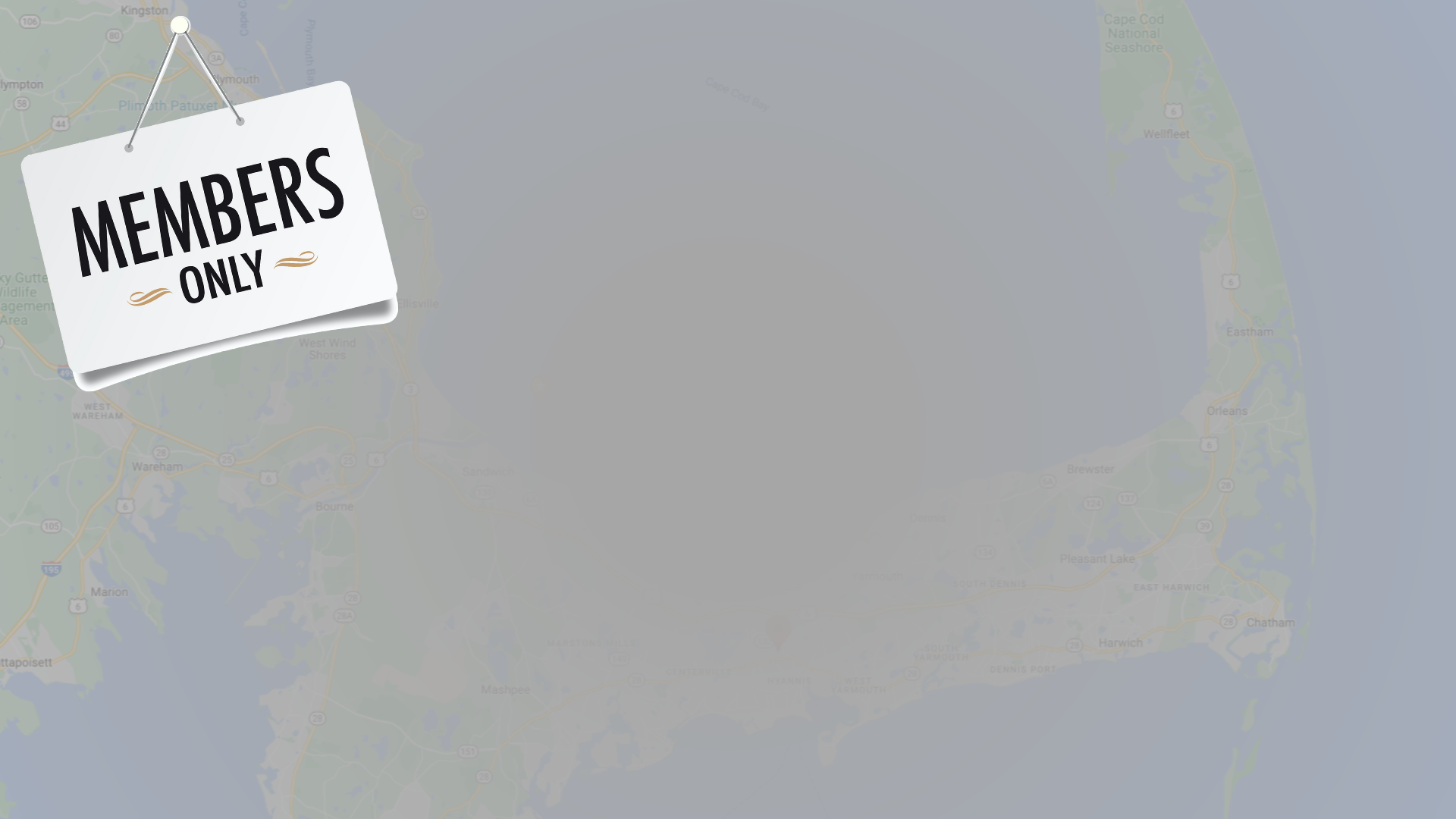
The First Big Bass
A few weeks into May is usually when the big fish show up in full force. This is when the water temps are where they need to be for the squid, herring, and mackerel to migrate into our waters and provide the stripers with the proper food source to stick around.
In my opinion, the best thing that has happened for surf casters fishing the back side of Cape Cod since the seals took over is the recent explosion in the bunker population in the waters around the Cape.

Bunker are also referred to as menhaden and pogie. In the past decade their numbers have really increased in the waters off Cape Cod, attracting striped bass and even bluefin tuna close to shore.
Casting old standby lures like “The Danny” by Gibbs, SP Minnows by Diawa, Bill Hurly paddle tail swim baits, and 2-3 oz pencil poppers from Gibbs and Cotton Cordell can be top producers when the bunker are around.
Bars & Structure
The outer cape beaches are made up of ever changing sand bars, deep troughs, and inlets. All of this provides great structure, as well as strong currents that will hold feeding striped bass.
During the high tide striped bass and blue fish will travel along the shoreline hunting for smaller bait fish.
As the tide recedes, the fish will congregate in the deeper troughs and channels between bars, using them to coral bait and travel back to the deeper water as low tide approaches. A good angler will use this to his advantage, presenting baits into these small areas of deeper water.

A strong outgoing tide will create big surf and a lot of current. This presents a great opportunity for large stripers to hunt the smaller bait fish that get tossed around and disorientated, making for easy prey.
Casting heavy surface or heavy swimming plugs, as well as heavy jigs (2.5-5oz) is very affective while fishing these conditions.
Recommended Reels
Surfcasting the outer beach can be very hard on your gear. The surf can be big and keeping saltwater and sand off your reel can be an impossible task. Ideally, you want to be using a sealed reel as salt water can destroy a reel's internal components.
Sealed Reels
Van Staal is revered as the strongest and most reliable reel in the surf. Their VS series has been used by the most hardcore surfcasters for the last 20+ years. They are a serious investment but if you really want to get into surf fishing I can promise you it is worth it.
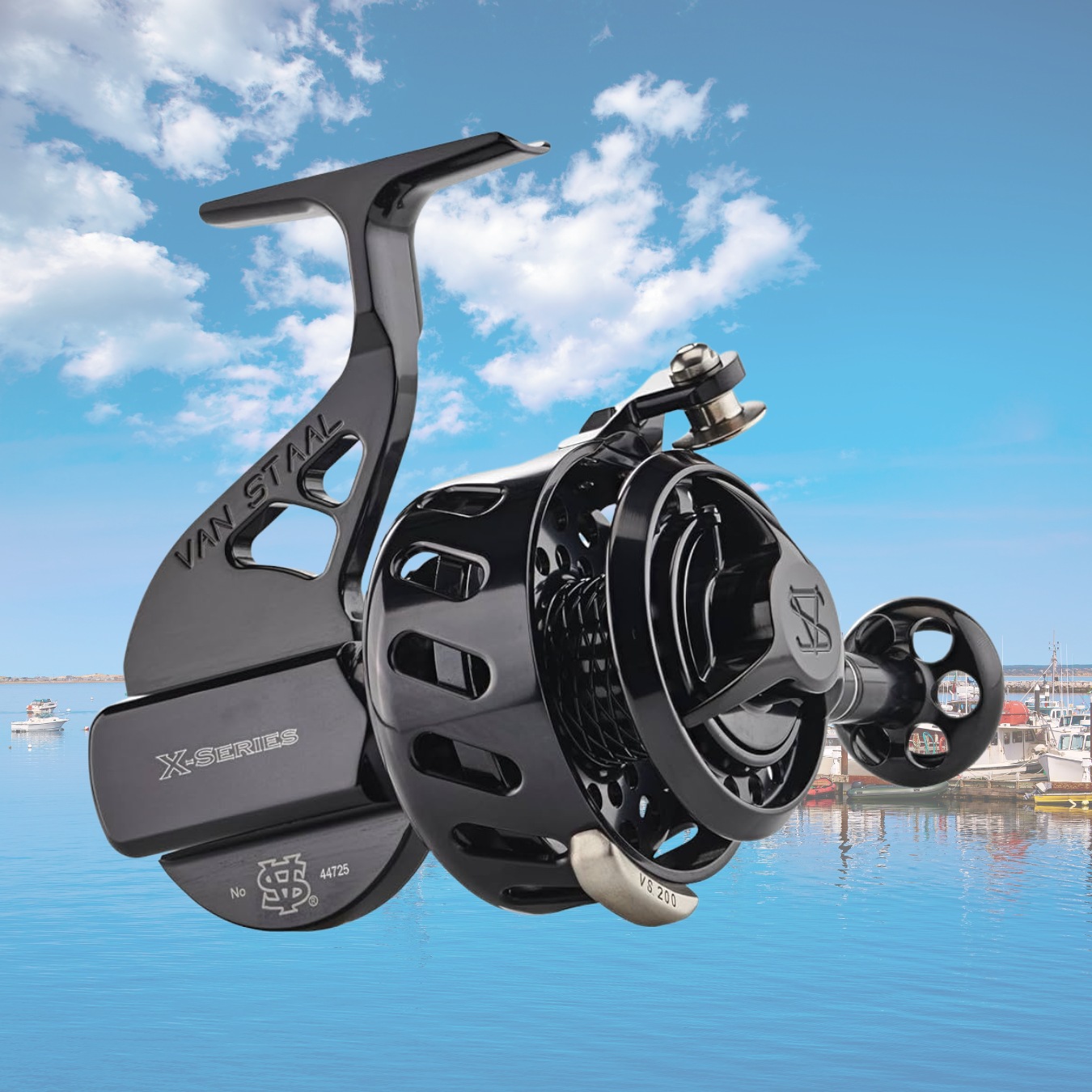
The amount of money you will spend replacing lesser reels will very quickly add up.
Less Expensive Options
With that said, if you’re only planning on making a couple trips to the surf a year, then there are a few other options that might make more sense for you.
Ultegra from Shimano, The new Slammer Series from Penn or The Shield series from Tsunami will hold up well and are a fraction of the cost of a new Van Staal.
Recommend Line
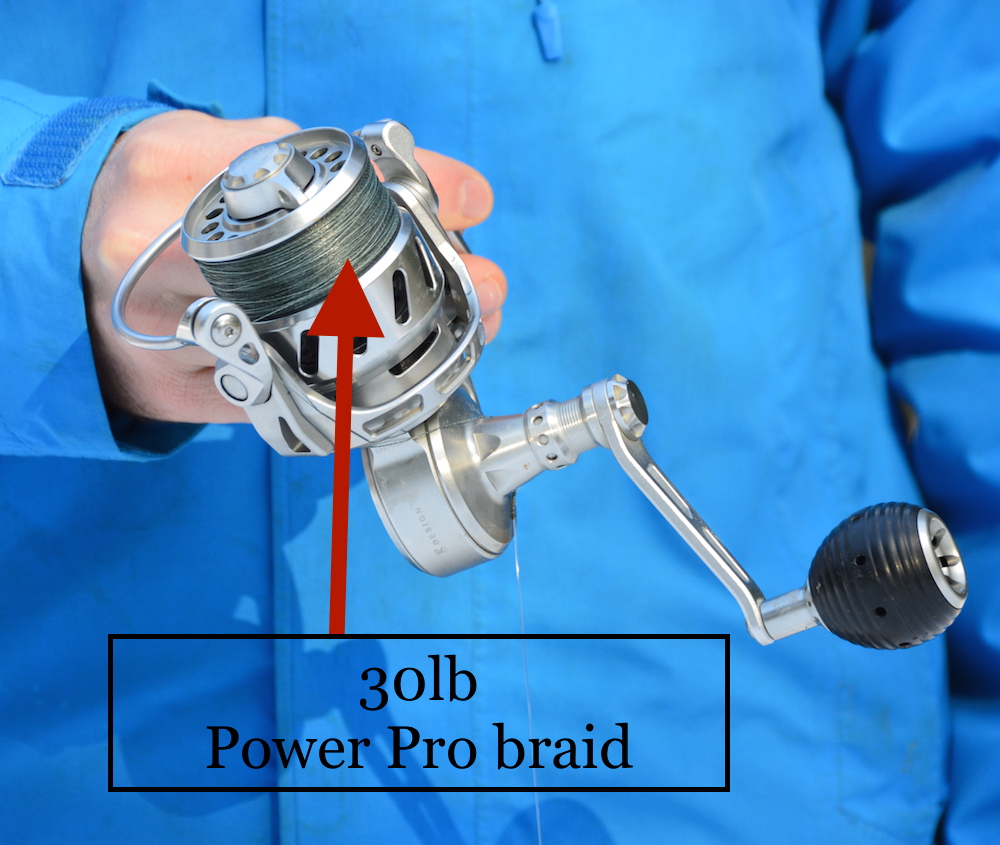
Monofilament line has become obsolete in the world of surf fishing. Distance is everything in this game and using the thinner, stronger, smoother braided line has become key.
On the backside, you don’t need the heavier 40-60 pound braid that is often used at the Cape Cod Canal. I personally find that the 30 pound Super Slick from Power Pro is the perfect line for this type of fishing.
Recommend Rods
Surf rods for fishing the back side should be able to handle a good range of weight. Your rod choice will first depend on whether you plan on fishing bait, or casting lures.
Rods for Casting Lures
If you are going to be casting artificial lures, I like a rod that can handle up to at least 3.5 ounces at a length of 9-11 feet.
When you are fishing big surf, being able to launch heavier plugs and jigs past the waves can be the key to hooking up. St. Croix makes surf rods for every price point.

One of the most popular surf rods at the Goose Hummock is the Tiralejo series from Shimano. Made in a 9’6,” 10’6,” 11’6” and 12,’ there is something for everyone in this affordable series of surf rods.
Rods for Fishing Bait
If you are planning on throwing out frozen bait such as clams, squid, mackerel, bunker, or herring then your rod action or sensitivity is less important.
Focus on looking at rods in the 10-12-foot length that can handle whatever weight sinker you will be using. Usually 2-5oz depending on the conditions of surf and current.
In Conclusion
Cape Cod’s back side beaches can yield the catch of a lifetime for the beginner angler to the most seasoned of surf casters.
Whether you are spending the day with your family on the beach with a rod in a sand spike, or walking a lonely stretch of sand all by yourself - there is something for everyone on the beautiful back side beaches of Cape Cod.
Good luck and tight lines 🎣
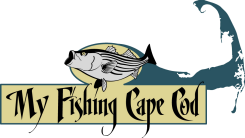
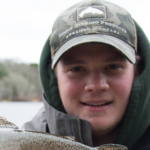
Sam, Thanks for the great article and tips. I love the outer cape and usually head down from CT a few times a year.
Still chasing that big one.
Danny
Thanks for sharing everybody. As usual, lots of good, practical information. I have made the solo 1,000 mile drive to the Cape three times in past five years for a week of camping and fishing the beaches. Each trip has been different and I learned a lot each time. Hoping to get back again I 2025.
1,000 mile solo trip – now that is dedication! Love it. I hope you’re able to get back out here again in 2025 Steve. Let us know how you do!
Great article! Hopefully in the near future I’ll have time to fish those beaches. I only make it little past the canal at this point. In regards to your point about not getting sand in your unsealed reels, I have a helpful tip. When ever I’m fishing Sandy beaches, even though I’m fishing with lures I bring a sand spike for however many rods I will have. Great place to hold your rod when you need to change a leader etc.. I also put some reflective on them so they are easily found in the dark.
Excellent tip about the sand spikes Marc. Thank you!
Marc,
I have seen your spike system in action and It works great for the many times where your rod is out of your hands. Plus it keeps our expensive rods out of harms way so nobody steps on them in the dark.
As an alternative, I have used the small adjustment that I have seen Ryan use on an open sandy beach. When laying your rod down, put the side with the handle against the sand. This creates space between the sand and the actual moving part of the reel and prevents sand from coating the reel.
Fantastic article! Love the backside beaches! Even if you don’t catch fish just being there is priceless! Thanks for all the info, You have me excited to start trying the outer beaches soon! I will come and say hi when I am at Goose Hummock! Great job!
Great article. I have been fishing the Great Backside Beaches for 35+ years now, ranging from Maguire’s Landing in Wellflet all the way to Race Point. Although the seals have mad a dent in the fish population, there are still plenty of big fish to be had. Personally, I have used a Penn 704Z reel for these past 35+ years, and it had held up extremely well. One of these days, I need to try the braided line. Although the number of “no fish” trips has far outnumbered “fish on” trips, there is nothing better than a walk along the beach, pole in hand gazing out at the water.
Nice report Sam.
Fishing the outer beach alone is the pinnacle of fishing, in my humble opinion.
Nothing else compares..
Great post! thanks …
Generally speaking, does there need to be an on-shore wind (with waves) to be productive? The photos above show a pretty calm ocean where the subjects are fishing …
Also, for May and early to mid June, can daytime be productive, or does one have to fish in the dark? And if “dark”, how does one find the structure and the spots if you don’t have an opportunity to pre-scout?
All great questions Jeff. I have always thought that the best wind for an ocean beach is over 10 mph coming on shore and while that may hold true, some of our best nights have been with very little wind. Jerry Audet teaches that the one to look for is an on shore wind that hits the beach at an angle of about 45 degrees, not straight on. DJ Muller has always said that you want wind and current going in the same direction so I would pick a tide cycle when the angled wind is going roughly in the same direction as the along shore current, not in opposition to. Along shore current is a product of the tidal movement and changes direction depending on what the tide is doing. Contrary to the belief of many, tidal current does not flow in and out in relation to the shore, but rather along the shoreline between areas enclosed by land structures and the open ocean.
One year at Nauset Beach, I think it was 2023, but I could be mistaken, the day bite was predominant. In talking with surfcasters, I heard of productive bites that would immediately shut down when the sun went down. Then nothing all night. I will still mostly fish at night, as I feel that the Bass come closer in to shore after dark. A friend of mine related an experience of following a school of Bass with sonar that was fairly far off an ocean beach during the day, then progressively moved closer to the beach during the night until they were in the waves when it was darkest. Right Ryan!
It is critically important to scout out ocean beaches at low tide to identify the structure which is just about always under water at high tide. You can find fish by walking the beach and casting every once in a while but you are going to spend a lot of time in fish less water. Times of New Moons and Full Moons are best as they have the lowest low tides. You don’t have to scout at night, the daytime lows have similar tides although each days 2 tide cycles are not identical. The low tide during the dark hours expose more than those during the day. If you can’t scout in person then Google Earth can be of some use. It is important to know that since ocean beaches have “soft structure” and will change over time, the closer you do your scouting to your actual fishing session, the better. If you do find yourself on a beach at night without having previously scouted then you can find structure such as bars and points by looking for white water that extends farther from the beach than the norm. White water tends to shine in the moonlight. While you can find fish feeding on a bar, they are often holding on the down current side (of the along shore current) as that side of the bar drops off into deeper water. Remember that fish hold in different places as the depth of water from the tidal cycle changes and relates to the structure. Fish may be on a bar during the first two hours of the drop but then move into deeper water as the tide progresses. The same is true for troughs that run parallel to the beach. Fish will feed in a certain trough but ignore others. They will change their preferred trough as the depth changes due to tidal movement. This is why you may be catching fish for a while then nothing. The fish may still be in the area but are relating to a different part of the structure as a result of changing current, depth, or a combination of the two.
Thanks Dex for leaving that super detailed and in-depth comment. Much appreciated!
I’ve seen their eyes in the curl of waves on moonlit nights.